Customer Health Score vs. Customer Maturity Index
What is Customer Health Score and Customer Maturity Index; Why does your brand need them?
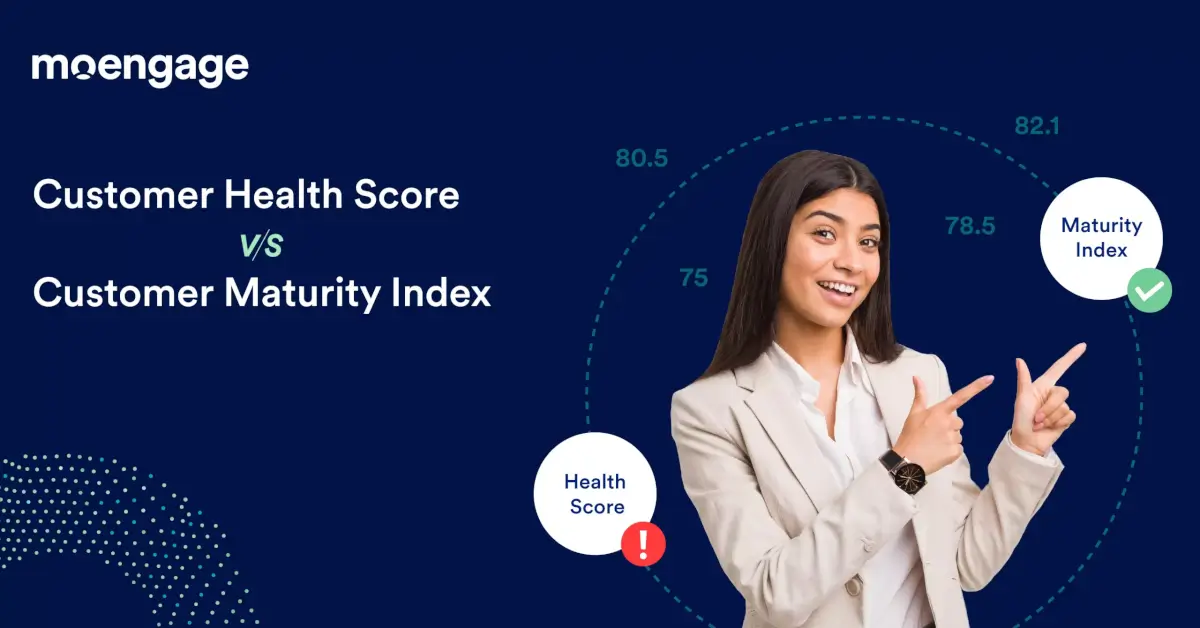
Reading Time: 7 minutes
You want to acquire customers and retain them forever in an ideal world. But, sadly, the reality is quite different. With so many options available to the modern customer, it can be that customer soon leaves for a much better option.
Since new customer acquisition is 5X as expensive as retaining existing customers, it makes sense to focus on retention. You can strengthen your relationship with your customers and, in turn, retain them by understanding their needs and preferences and identifying gaps in your engagement strategy.
This is where the customer health score and customer engagement maturity index come into the picture!
What is Customer Health Score, and Why Should Your Brand Measure it?
The customer health score is an important metric that gives you insight into your relationship with your customer.
Are they happy with you or are they likely to churn? Are they going to invest more in you?
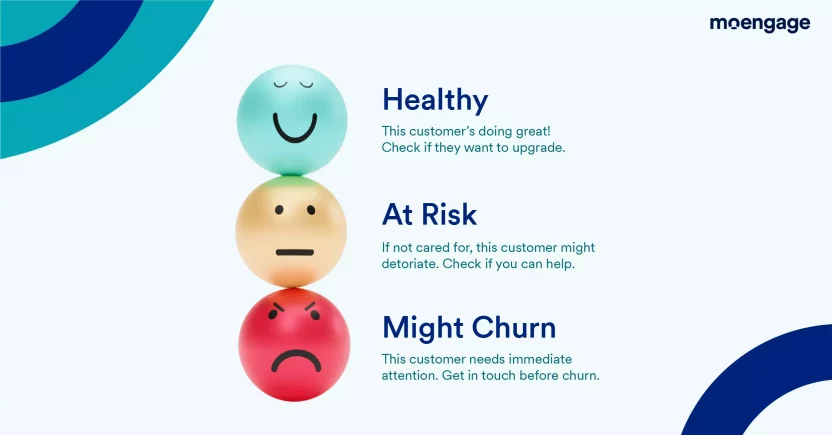
What is customer health score and why do your need it?
The customer health score helps you to gauge your relationship with the customer and how well you maintain a healthy customer relationship.
The customer health score is an important metric for any company with regular and long-standing customer transactions. It tells you if your customers are happy with your product and will stay with you.
Why is Customer Health Score so Important?
If you know how to use the customer health score metric well, you can predict how your customers will behave in the near future (will they stay, invest more, or churn).
Beyond that, happy customers can eventually become your brand loyalists and can become your brand’s biggest ambassadors. This means that they will likely recommend your products to their friends and family and do the marketing for your brand.
That’s enough reason for you to keep your customers happy, right?
But then comes the most obvious question — How do you measure customer health scores?
Before you begin measuring your customer health score, choosing the metrics you want to evaluate is important. You can, of course, pick any combination of metrics that are best suited for your product or business model. Some of the popular metrics that marketers love to measure are:
- Customer feedback: The idea here is to identify the pattern of customer behavior from customer feedback. Simply put, positive feedback means the customer is likely to stay, while negative feedback means a possible churn. However, how you collect the feedback can give you more insights into particular customer behavior.
- Product usage, upgrades, and renewals: The overall engagement with your product is another useful metric to track. For example, how frequently does the customer use your product? Which features do they use? Is the customer downloading all the product updates and renewing a subscription without a reminder? If yes, they’re more likely to stay for a longer time!
- Customer support cases: How frequently is the customer reaching out to your customer support team? How would you rate their sentiment post the interaction with your customer support executive? All these play a crucial role in finding better customer behavior and how likely they are to stick around.
Based on all these metrics, you can now gauge the overall customer health score. You may take into account different factors that are crucial for you. For example, if product subscription is an important metric, you will assign it a high value compared to the customer success metric, which might not be crucial for you.
However, although the customer health score is an important metric, it is of little use without another important metric — the customer engagement maturity index.
| Find Your Customer Engagement Maturity Score
👉Check your customer engagement maturity score against your competitor |
Let’s understand this maturity index and how this customer maturity model works.
What is the Customer Maturity Index (CMI), and Why Does Your Brand Need to Measure the Maturity of Your Engagement Strategies?
The particular index is a combination of metrics that help you to gauge different aspects of engagement of your brand and customer.
These include personalization, engagement strategies, tools and platforms in your martech stack, channels used and their prioritization, and different insights like a customer, campaign, and customer journey.
The Customer Engagement Maturity Model by MoEngage
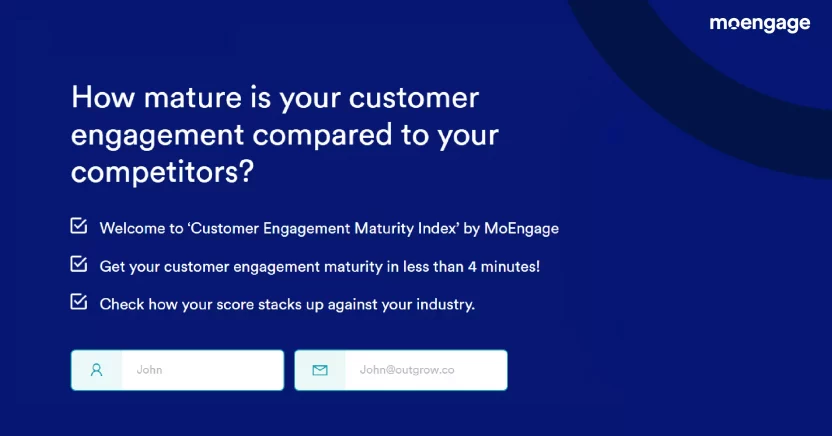
This maturity index by MoEngage is better than customer health scoring
MoEngage uses six different capabilities to help you determine your customer engagement maturity index. Measuring these metrics are important for brands because they help you to gauge how mature is your audience engagement compared to your competitors. These six capabilities include:
- Analysis and Prediction: It aims to gauge your engagement tech stack, the kind of customer insights you are measuring along with journey and campaign insights being analyzed.
- Personalization: Personalization is the key to any marketing effort, the more personalized your communication, the better your engagement. This capability measures how you personalize customer communication, the conditions, and the channels used.
- Engagement and Retention: To retain your customers, you must ensure they’re engaged with your brand. Hence this is an essential metric to measure as it focuses on your top engagement challenge and your campaign strategy.
- Omnichannel Strategy: As the name suggests, this sheds light on your omnichannel strategy, the channels involved to acquire new customers and retain the old ones, and how you prioritize them.
- Mobile and Digital Strategy: You just can’t be omnipresent without having strong mobile and digital strategy. This capability helps you to take a step back and look at your digital strategies in terms of usage across web, social, email, and mobile, among others, and overall customers’ health in respect to such strategies.
- Resources and Operation: Managing your resources and operations is essential to getting the maximum ROI. So, you need to measure this capability to look into how you can optimize engagement for your customer base by managing resources and operations efficiently.
Customer Health Score vs. Maturity Index: Which is More Effective, and How Should you Measure Each?
Customer health score has become the most important metric for customer success teams.
Take a glance at any of customer success teams dashboards, and you will see the customer health score in them.
It is one of the major metrics to gauge if you are experiencing a churn or growth. However, as discussed already, a customer health score is not the ultimate key metric that can help your gauge opportunities with your customers.
And hence, the need for a newer key metric – the customer maturity calculator which would go deeper and provide more. Let’s take a closer look at how these two differ.
A customer health score (CHS) is a metric that measures your relationship with your customer. It helps you gauge their health and how your relationship will turn out in the future. ( churn, expansion, renewal, etc.)
The customer engagement maturity calculator or CEMI is an index that helps you to understand the maturity of the customer to run their business efficiently with your solution.
To measure CHS and CEMI, you must choose different metrics that fit your requirement.
For example, if you are measuring the customer health scores, you must determine the attributes you will measure. Is it the product usage, churn, subscription renewal, and so on.
Similarly, to measure CEMI, you need to develop a CEMI assessment specific to a particular team. For example, your CEMI assessment for the sales team will differ from the CEMI assessment of the customer success team.
How to Evaluate Customer Health Score?
A quick synopsis of evaluating customer health in a step-by-step manner
- Define your customer health: What is your end goal? Is it going to help you review your loyalty program? Is it going to alert you about customer churn? Once you know your end goal, you will know which metric to choose that will fit in with your overall customer success strategy.
- Choose the metrics: Once you set your goals, choose the key metrics that will help you evaluate customer health.
- Creating a scoring system: Based on your goals and the different metrics you choose, create a system to gauge what’s working and not. For example, if your customers are returning and renewing subscriptions, give it a higher score that adds to the overall evaluation. If you’re receiving negative customer feedback, assign a lower score that impacts your overall rating, and so on.
- Visualize the data: Use a visualization tool to let your team visualize the data and drive actionable insights.
Here’s an example:
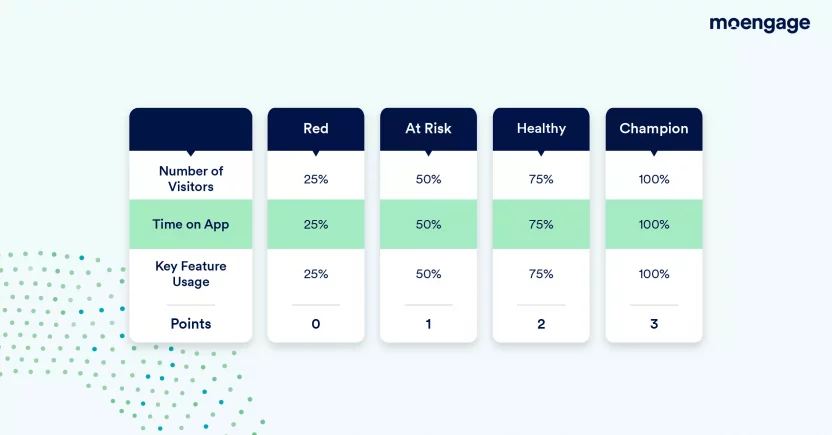
Evaluating customer health score
How to Evaluate CEMI?
Establish your CEMI characteristics. In this step, you aim to define the maturity of each function or each key metric that you would assign to gauge the maturity of your engagement strategy.
While doing this, you may consider various key factors like the vision of the function, the people, the process they follow, and the technology stack they have.
The customer engagement maturity model allows you to measure maturity across metrics like engagement and personalization as well.
For example, the CEMI measures based on defined values like initial, managed, defined, or nascent, emerging, and mature based on how a brand answers questions around analysis and prediction, engagement and retention, personalization, mobile and digital strategies, etc.
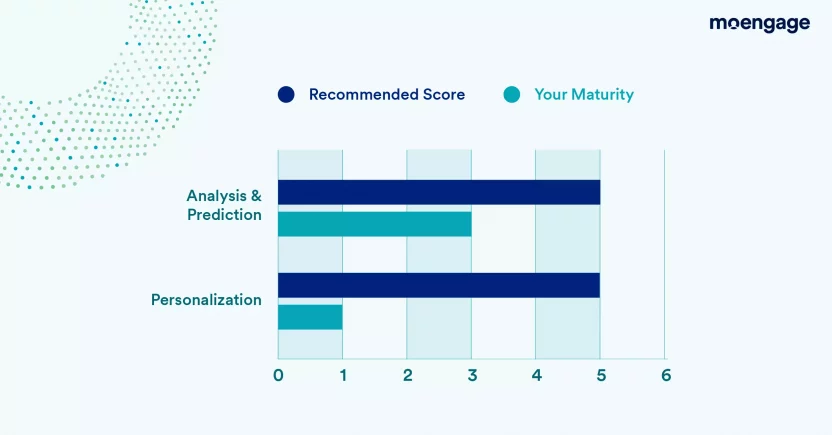
CEMI provides insights into your engagement metrics, helping you better engage the at-risk customers as well as healthy customers
Next, you calculate the customer engagement maturity index. You first group the factors by their characteristics and then give a maturity level for each of the factors. Then, you assign a score for the maturity level and calculate the CEMI.
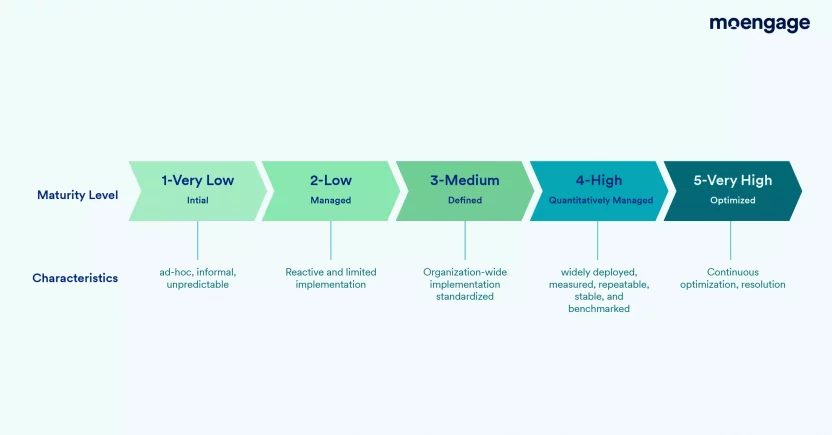
CEMI uses metrics that will help improve customer relationships
Get Started With Measuring Your Customer Engagement Maturity
Answer 11 questions (in ~4 minutes) to get your current maturity score and compare it with your industry (and regional) competition.
The industry maturity is based on thousands of responses from marketers, product owners, and executioners across regions.
Understand how you fare in the following categories:-
- Analysis and Prediction
- Personalization
- Engagement and Retention
- Omnichannel Strategy
- Mobile and Digital Strategy
- Resources and Operations
The industries covered include:
- E-commerce
- Banking and Finance
- Ed-tech
- Food & Beverage
- Media & Entertainment
Not just the score but get best practices and actionable strategies to improve your engagement game!
Here’s What You Can Read Next
|













